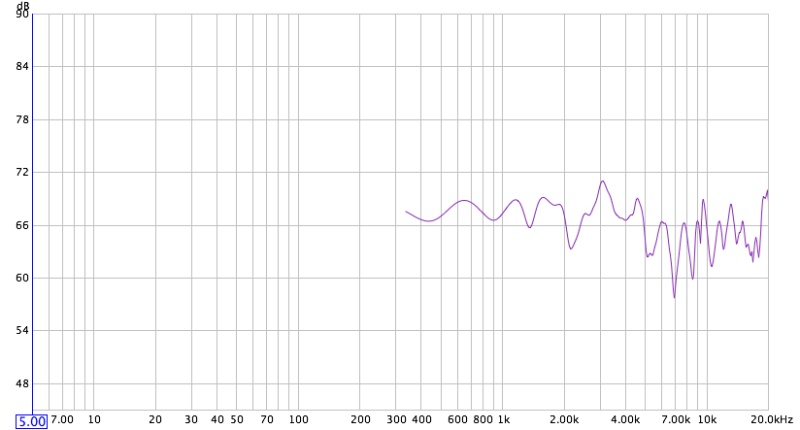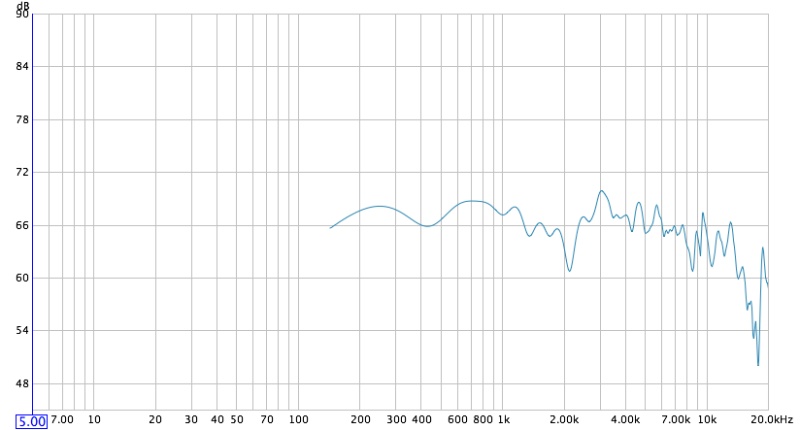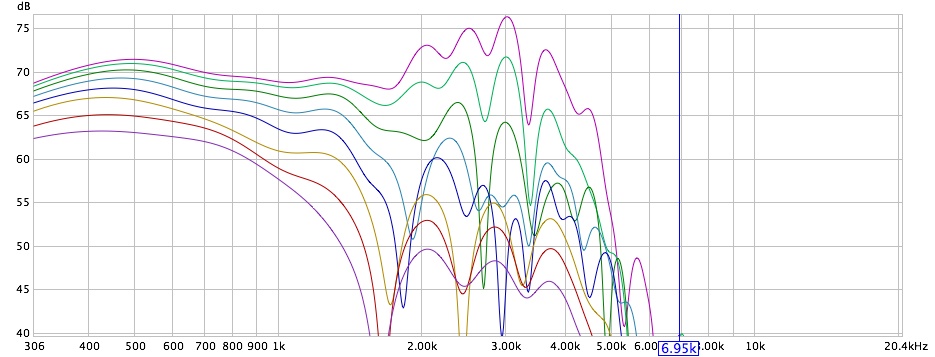I think there might be. A surroundless driver, using 2 spiders; one above the top plate and one several inches below the back plate.
Do you have a link or is it just an idea?
Here's polars on the PE 12"WG combined with a 15" woofer:
....
Interesting, and thanks a lot for sharing
If you don't mind, I have some questions:
1. What's the driver working with the WG?
2. Any mods on the throat of WG (and/or the adaptor)?
3. Can you trace the causes of those 'glitches' around 8~11kHz?
I apologise if those have been brought up before.
....
These are my cone treatment goals in order of importance:
1. Maximise cone to air energy transfer
2. Minimise the reflected energy within the cone
3. Maximise surround to air energy transfer
...
How can 1 & 3 above be done? Or the statements are limited to a certain condition (a certain range of frequency, amplitude, or the likes... )?
Interesting, and thanks a lot for sharing
If you don't mind, I have some questions:
1. What's the driver working with the WG?
2. Any mods on the throat of WG (and/or the adaptor)?
3. Can you trace the causes of those 'glitches' around 8~11kHz?
I apologise if those have been brought up before.
Your welcome!
1. Eminence ASD1001S
2. No, the throat needs work. It definitely doesn't match up well.
3. My guess is that #2 is the what's causing #3 After I fix the throat I'll know better. They may be inherent in the driver to some degree. It's hard for me to say b/c the other horns I've put it in are very rough.
Here's the same compression driver inside the same 15" woofer on it's coaxial horn on axis:

11.25 off

22.5 off axis

33.75 off axis:
An externally hosted image should be here but it was not working when we last tested it.
45 off axis
An externally hosted image should be here but it was not working when we last tested it.
Hope that helps,
Dan
Last edited:
I think there might be. A surroundless driver, using 2 spiders; one above the top plate and one several inches below the back plate.
It would still serve the same function as the surround. The motion must reduce to zero somewhere.
Ah! I remember it now. It's indeed brought up before: http://www.diyaudio.com/forums/mult...eters-large-drivers-coaxes-6.html#post2028730
(and the next)
Sorry
(and the next)
Sorry
Ah! I remember it now. It's indeed brought up before: http://www.diyaudio.com/forums/mult...eters-large-drivers-coaxes-6.html#post2028730
(and the next)
Sorry
No worries. At least you didn't get it all messed up this time.
Dan
So maybe there is a place for the Fertin Acoustic 20ex Model 7 Field Coil Driver with no surround ...
For $2200 each, it won't be my house.
An externally hosted image should be here but it was not working when we last tested it.
Very interesting concept however, but for now I'll stick with my problematic surrounds.
Dan
How can 1 & 3 above be done?
For 1 - a variation of the EnABL process.
For 3 - PM me for that one (sorry)
Cheers,
Alex
It would still serve the same function as the surround. The motion must reduce to zero somewhere.
Sure. But I was thinking about the sonic advantages. The cone would not be reflecting off anything and there would be no transition from pistonic to non-pistonic movement.
Sure. But I was thinking about the sonic advantages. The cone would not be reflecting off anything and there would be no transition from pistonic to non-pistonic movement.
At the interface between the cone and spider, an impedance match exists just as an impedance match exists at the cone-surround interface. This interface will possess resistive as well as reactive components. Energy will be reflected back into the cone due to the reactive components. There is no free lunch here. Motion must reduce to zero somewhere, otherwise it will not be moving in reference to anything and no pressure variations (ie sound) will result.
check out this break up behavior:

Response is gated at 3 milliseconds, 1/12 octave smoothed, one meter at the top of the basket from 11.25 degrees off central axis to 90 degrees in 11.25 degree steps. I think this shows why measuring well off axis is important.
Anyone know of this is typical behavior? Anyone else want to post some graphs for public viewing?
Dan

Response is gated at 3 milliseconds, 1/12 octave smoothed, one meter at the top of the basket from 11.25 degrees off central axis to 90 degrees in 11.25 degree steps. I think this shows why measuring well off axis is important.
Anyone know of this is typical behavior? Anyone else want to post some graphs for public viewing?
Dan
Sure. But I was thinking about the sonic advantages. The cone would not be reflecting off anything and there would be no transition from pistonic to non-pistonic movement.
A cone without surround, hmm... isn't that (sort of) a big whizzer?
As the wave propogating, a free edge has the same reflection amplitude as a solid wall, doesn't it?
So, eventually, the breakup would probably be more complex (if not stronger).
- Status
- This old topic is closed. If you want to reopen this topic, contact a moderator using the "Report Post" button.
- Home
- Loudspeakers
- Multi-Way
- Smooth break-up